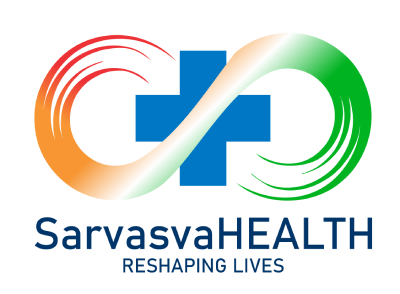What is Invisalign?
Invisalign is a revolutionary orthodontic treatment that has transformed the way individuals achieve straighter smiles. It is a clear aligner system designed to straighten teeth without the need for traditional braces. Invisalign offers a discreet and comfortable alternative for individuals seeking to correct dental misalignment and improve their oral health and appearance. This article explores the concept of Invisalign in dentistry, how it works, its benefits and limitations, and its impact on the field of orthodontics.
Understanding Invisalign:
Invisalign is a brand of clear aligners, which are custom-made, removable trays that gradually shift the teeth into their desired positions. The treatment process involves a series of aligners, each slightly different from the previous one, to facilitate a controlled and progressive movement of the teeth.
How Invisalign Works:
The Invisalign treatment process typically includes the following steps:
- Initial Consultation: The first step involves a comprehensive consultation with an Invisalign-trained dentist or orthodontist. During this appointment, the dentist will assess the patient’s oral health, take digital scans or impressions of the teeth, and discuss the individual’s treatment goals.
- Treatment Planning: Using the digital scans, a 3D model of the patient’s teeth is created, allowing the dentist to plan the precise movements required to achieve the desired alignment. The treatment plan shows the projected progression of the teeth from their current positions to the final result.
- Custom Aligners: Based on the treatment plan, a series of custom-made aligners are fabricated using advanced computer technology. Each aligner is worn for approximately one to two weeks before switching to the next one in the series.
- Progressive Alignment: As the patient progresses through the aligners, their teeth gradually shift into the planned positions. Regular check-ups with the dentist are scheduled to monitor the progress and make any necessary adjustments to the treatment plan.
- Retention Phase: Once the final set of aligners is completed, the patient enters the retention phase. At this stage, the dentist may recommend the use of retainers to maintain the achieved alignment and prevent the teeth from shifting back to their original positions.
Benefits of Invisalign:
Invisalign offers several advantages compared to traditional braces:
- Aesthetics: Invisalign aligners are virtually invisible, making them a more discreet option for individuals who wish to straighten their teeth without the noticeable appearance of metal braces.
- Removability: Invisalign aligners can be easily removed for eating, brushing, and flossing, allowing for more comfortable and convenient oral care.
- Comfort: The aligners are made from smooth plastic material, reducing the likelihood of irritation or discomfort commonly associated with braces.
- Fewer Dental Visits: Invisalign treatment typically requires fewer dental visits compared to traditional braces, as there are no adjustments or wire changes necessary.
- No Dietary Restrictions: With Invisalign, there are no restrictions on what the patient can eat, as the aligners are removed during meals.
- Improved Oral Hygiene: Removable aligners enable better oral hygiene practices, reducing the risk of dental issues during treatment.
Limitations of Invisalign:
While Invisalign is an excellent option for many individuals, it may not be suitable for all cases of dental misalignment. Some limitations of Invisalign include:
- Complex Cases: Invisalign may not be suitable for severe dental misalignments or cases requiring significant tooth movement.
- Compliance: Successful Invisalign treatment relies on the patient’s compliance in wearing the aligners as prescribed by the dentist. Failure to wear the aligners consistently can hinder the effectiveness of the treatment.
- Patient Responsibility: Invisalign requires patients to be responsible for wearing, removing, and caring for their aligners properly.
Impact on Orthodontics:
Invisalign has had a transformative impact on the field of orthodontics. Its introduction has led to a paradigm shift in how orthodontic treatment is approached. The ability to offer an aesthetically pleasing and comfortable alternative to traditional braces has attracted many patients who previously may have hesitated to undergo orthodontic treatment.
Additionally, the digital technology used in the Invisalign process has enhanced treatment planning accuracy, allowing dentists to provide more predictable and efficient outcomes. The convenience of removable aligners has improved patient compliance and satisfaction, leading to higher treatment success rates.
Conclusion:
Invisalign has revolutionized orthodontic treatment, offering a modern and discreet approach to achieving a straighter smile. With its clear aligners and customized treatment plans, Invisalign provides numerous benefits for patients seeking to correct dental misalignment. However, it may not be suitable for all cases, and patients should consult with an Invisalign-trained dentist or orthodontist to determine the best treatment option for their specific needs. Overall, Invisalign’s impact on orthodontics has been significant, reshaping the way individuals approach and experience the journey to a more confident and beautiful smile.
Invisalign Clinic:
We provide the best healthcare facilities for Invisalign. Our multispecialty clinics are situated in the following locations:
Our Main Centre for Invisalign Treatment in Dadar, Mumbai
Our Center’s for Invisalign
One can visit any of our branches that are nearby to your location for the best Invisalign. Our experts not only provide superior quality care using the latest technologies but also provide complete treatment along with rehabilitation facilities and post-operative care.

